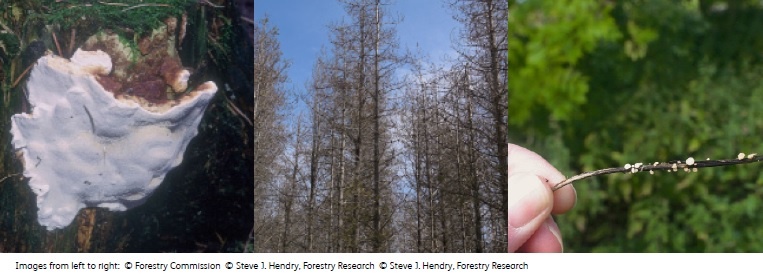null
Modelling economic impact and strategies to increase resilience against tree disease outbreaks
Led by Dr Adam Kleczkowski, University of Stirling
Forests in the UK are facing increasing pressures from pests and pathogens. An increase in the volume and global scale of trade, coupled with the evolution and adaptation of pests has led to new diseases and pests appearing in the UK at an increasing rate. The issue is not so much whether a new epidemic will emerge in the next years, but when and how it will happen.
In this project, an interdisciplinary team of mathematicians, forest ecologists and economists will work together to build a series of models to study the ways in which different management options can reduce risks and expected damages from a range of forest diseases. The models will generate information on the effects of these options on the supply of ecosystem services provided by forests such as carbon sequestration and storage, biodiversity, and recreation opportunities. Models will be combined with a "choice experiment" to measure the cost and benefit of management options. This experiment will be implemented with stakeholders, including members of the general public. The models will allow the researchers to assess which policy options offer best value for public money while reducing the risk of disease spread. In addition, the researchers will study the implications of uncertainty on the part of forest managers over the effects of their actions using a real options approach. The findings will be of use to forest managers, as well as government agencies and departments which are concerned with tree and plant diseases and forest management.
Project website:
Specific objectives (edited):
1. Identify a set of economic, epidemiological and ecological drivers determining the spread of four case study tree diseases in the UK.
2. Consider the theoretical interaction between drivers using an optimal control model. This will be done initially at the level of a single forest owner who is interested in maximising the timber value of the forest with a single tree species when a given disease is considered.
3. Produce a classification of UK forest types (and management types) in terms of risk of infection, resistance and resilience to disease.
4. Identify possible trade-offs and synergies between changes in resistance/ resilience to disease and the supply of multiple ecosystem services from a forest.
5. Represent the set of economic, epidemiological and ecological drivers at a spatial scale using agent-based modelling for a system representing a realistic Scottish landscape to show how the "pay-offs" to individual forest managers from disease management options depend on the actions of other managers, and on landscape-level characteristics such as forest connectivity.
6. Identify a set of management and policy responses to each disease, and evaluate the impacts of these on disease impacts, disease spread and the supply of two ecosystem services (carbon sequestration, recreation) and an indicator of forest biodiversity.
7. Using a spatial model described, understand how forest managers would interact in their responses to these management and policy alternatives (including possible financial incentives and regulatory requirements).
8. Estimate the costs over time of each management and policy option in terms of mitigation expenditures, and understand the commercial impacts of the disease outbreak under each management option.
9. By developing a real options model, consider how the issues of learning and uncertainty affect this optimal decision making of forest managers with regard to disease risks, both at the level of individual forest managers and at the landscape level.
10. Using choice experiments, quantify the willingness to pay of UK households for public expenditures on disease control, through a focus on avoided environmental impacts.
11. Produce a cost-benefit ranking of public policy responses to future disease risks.
This project is in partnership with University of Cambridge, University of St Andrews, Bangor University and Forest Research
News
Recently Updated
As you and your team create content this area will fill up and display the latest updates.
